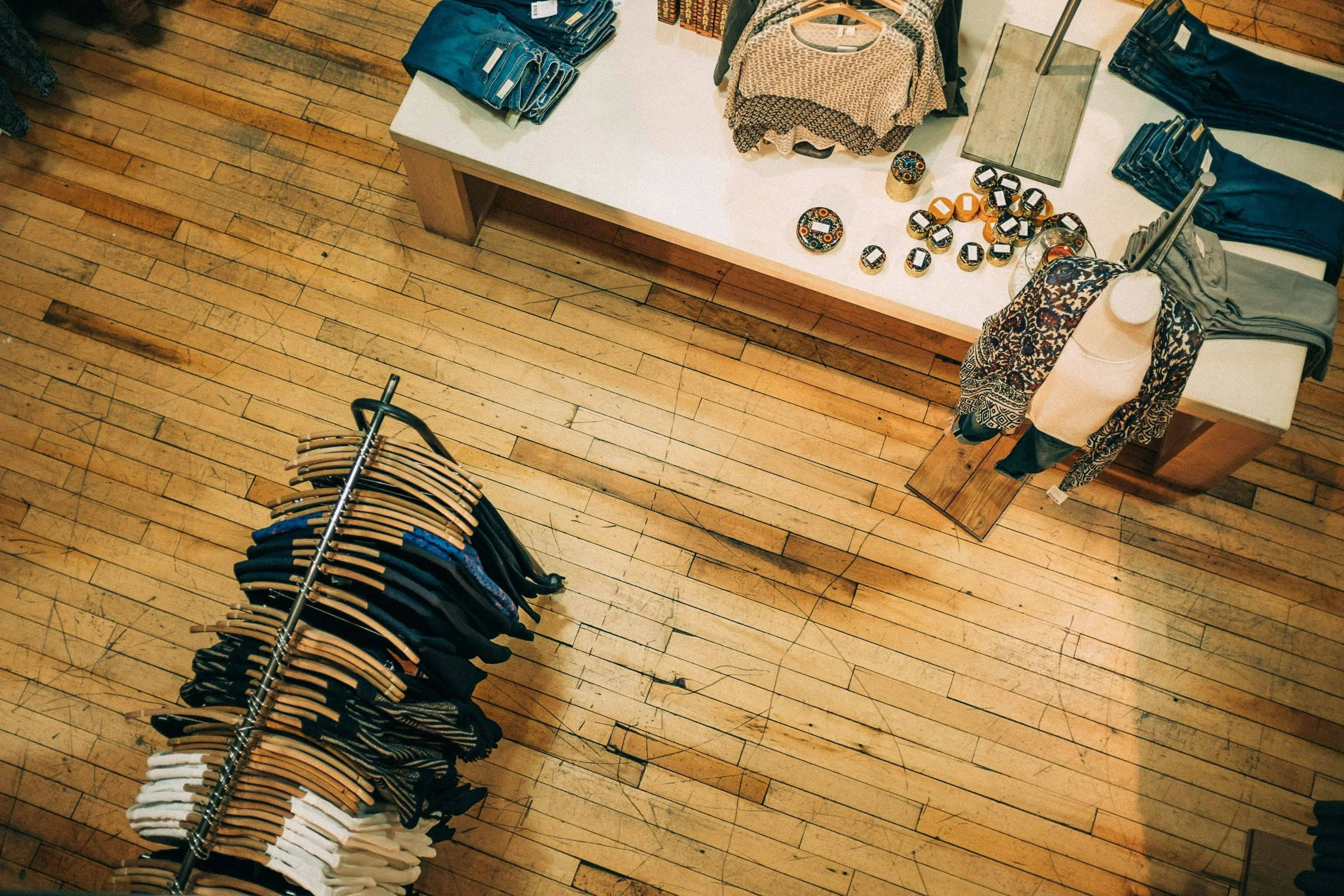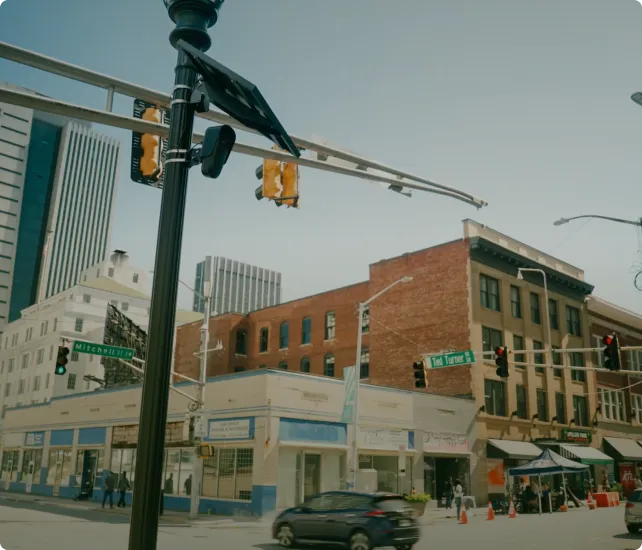


What Are the Main Types of Retail Shrinkage?
Learn about the different types of shrinkage in retail, including theft, errors, and fraud. Discover how shrinkage affects revenue and operations.
Retail shrinkage is a common but often misunderstood issue that can quietly chip away at a business’s profitability. Even with lean operations and strong sales, shrinkage can lead to major financial losses and, in severe cases, even force a business to close its doors.
But shrinkage isn’t caused by any one thing. It stems from a mix of factors, some more visible than others, which makes it especially hard to solve without the right information.
The good news is that you can prevent inventory shrinkage — if you know what to look for and how to act. The first step is understanding what it is, what causes it, and how to spot it.
What is shrinkage in retail?
Retail shrinkage is the loss of merchandise due to reasons other than sales, resulting in discrepancies between a business’s recorded and actual inventory. According to the National Retail Federation (NRF), these discrepancies lead to billions of dollars in losses each year, making shrinkage one of the top concerns for retail business owners and asset protection teams.
Beyond the impact on bottom lines, shrinkage can create ripple effects across operations, including:
- Supply chain disruptions: Gaps between actual and recorded inventory can throw off forecasting and delay reordering, affecting product availability.
- Inventory management challenges: Inaccurate records can cause unexpected stockouts.
- Lost sales: Frequent stockouts can damage customer perception and make your business seem unreliable.
- Higher prices: To offset losses, retailers may raise prices, potentially driving away customers.
- Business closure: When shrinkage drives persistent cash flow issues, it can ultimately make a business unsustainable.
Common types of shrinkage in retail with examples
While theft plays a major role in shrinkage, it's not the only factor. Retailers also face losses from internal errors, fraud, and administrative missteps, each requiring a different response to prevent further loss.
Below, we highlight the most common types of shrinkage, how they appear in daily operations, and what you can do to minimize their impact:
External theft
External theft refers to merchandise stolen by people outside a business, such as customers or organized retail crime (ORC) groups. It’s the most common source of shrinkage, accounting for 37% of retail loss.
This type of theft can take many forms, including opportunistic shoplifting, planned ORC hits, parking lot theft, and smash-and-grab incidents. In most cases, offenders remove items from displays and conceal them in clothing or booster bags. Smash-and-grabs happen fast, often involving broken display cases and getaway vehicles.
Improving visibility in entry points, exits, parking lots, and store floors is key to reducing these incidents. Tools like video cameras and license plate readers (LPRs) help identify suspicious behavior, capture vehicle information, and detect repeat offenders. Assigning staff to monitor retail store floors and reviewing captured images in real time can also support quick response and investigation.
Internal employee theft
Internal theft is the second largest cause of retail shrinkage, responsible for 29% of total loss. It involves employees stealing merchandise from stock rooms, manipulating inventory records, or giving unauthorized discounts to family and friends. In some cases, employees may work with ORC groups by sharing insider information, such as when high-value shipments are expected or providing access to restricted areas.
Employee theft is especially difficult to detect. Employees with access to records and security systems may alter logs to cover their tracks, allowing theft to go unnoticed for longer periods.
To reduce risk, conduct thorough background checks during the hiring process and perform regular, unannounced inventory audits. Offer anonymous tip lines so employees can report suspicious activity, and use point of sale (POS) monitoring tools to flag unusual patterns, such as excessive discounts or voided transactions.
Operational or administrative errors
Unlike theft, which involves malicious intent, this type of shrinkage stems from human error or system failures. Common causes include incorrect physical inventory counts, pricing mistakes, data entry errors, shipping discrepancies, POS system mismatches, and scanning issues at checkout.
Although unintentional, these mistakes can still affect your bottom line and disrupt inventory accuracy. That’s why prevention is essential. Train employees regularly on tasks like scanning and product counting, automate inventory management where possible to reduce manual input, and schedule routine stock audits to catch and correct errors early.
Fraud
Fraud involves exploiting store systems or policies for financial gain. It can be carried out by employees, customers, suppliers, or a combination of these groups.
Common types of fraud include:
- Return scams: Customers make fraudulent returns of used or stolen goods.
- Fake receipts: Counterfeit receipts are used to claim refunds.
- Coupon or gift card abuse: This might involve fake barcodes, employees overriding coupon limits, or customers stacking multiple discounts inappropriately.
- Vendor fraud: Suppliers may under-deliver, overcharge, or collude with employees to falsify deliveries.
To protect your business, strengthen vendor management, inventory tracking, and return policies. You can also:
- Run regular system checks to flag suspicious discounts or return fraud.
- Ask employees to double-check inventory counts during receiving.
- Create vendor agreements that define delivery expectations and outline penalties for discrepancies.
- Schedule vendor audits to surface fraud patterns.
Why identifying the type of shrinkage matters
Each type of shrinkage has different root causes and requires a tailored response. For example, external theft may call for physical deterrents like LPR cameras, while fraud may require policy changes.
That’s why it’s essential to identify the specific kind of retail shrink affecting your business. Doing so allows you to invest in the right tools, tailor employee training to the issues you’re seeing, and update store policies where needed.
It also helps you allocate resources more effectively. If operational errors are the main problem, for instance, you can focus on inventory management automation to reduce manual mistakes.
Tools and strategies to help your retail business reduce shrinkage
The type of shrinkage you’re dealing with will shape which loss prevention strategies and tools make the most sense. That said, there are several measures that can help reduce risk across the board.
Train employees to recognize and report issues
Employees can be your greatest asset in reducing shrinkage, but only if they’re trained to spot and respond to potential threats. Offer loss prevention training that includes real-world scenarios, such as simulated thefts.
Key topics to cover in training include:
- How to recognize suspicious behavior
- Common tactics like tag-switching
- How to calmly manage suspected incidents
- Your store’s inventory procedures, return policy, and reporting protocols
Design stores to reduce risk
Opportunistic and organized offenders often take advantage of poor store layouts and blind spots to steal merchandise. Improving visibility through intentional design can help reduce shrinkage tied to theft.
Tips to strengthen your store layout include:
- Keep aisles wide so employees can easily observe customer behavior.
- Place exits near staffed areas to limit unmonitored departures.
- Secure high-value items in locked displays located in employee-heavy zones.
- Use mirrors or cameras in corners or low-visibility sections.
- Ensure consistent lighting throughout the store to help deter theft and make it easier to spot suspicious activity.
Strengthen visibility at entry and exit points
Security measures at store entrances, exits, and parking lots play a major role in your store’s exposure to external theft. Minimal oversight in these areas can lead to easy getaways, encouraging shoplifting or smash-and-grab incidents.
Consider installing security cameras at key entry and exit points, assigning more employees to these zones, and placing LPRs in parking lots to capture vehicle information. One-way access systems, like turnstiles, can also help ensure customers enter and exit through monitored areas.
That said, strong retail security shouldn’t come at the cost of positive customer experiences. Aim for a balanced approach by focusing on the measures that matter the most. For example, instead of posting employees at every exit, rely on cameras and position staff in high-risk in-store areas like corners or back aisles.
Monitor repeat offenders across locations
Retailers with multiple locations are especially vulnerable to repeat incidents by ORC groups and individual offenders. If someone steals from one store without consequences, they may target other locations, assuming similar security gaps.
That’s why it’s important to invest in tools that help monitor offenders across sites. LPR cameras can identify vehicles linked to theft and send alerts when they appear at another store, supporting faster responses. They can also reveal broader patterns, like the same vehicle showing up repeatedly before incidents occur.
Flock Safety’s LPRs provide this level of visibility, helping teams act quickly and stay ahead of repeat threats.
Reduce shrinkage by targeting the right retail risks
Shrinkage is a common challenge in the retail industry, but it isn’t inevitable. The first step toward prevention is identifying the type of retail shrinkage affecting your business. Whether it stems from theft, fraud, or human error, knowing the cause allows you to take targeted action and protect your bottom line.
Flock Safety gives retailers the visibility they need to uncover and address those risks. Our LPR cameras capture critical vehicle information to help you identify patterns and repeat offenders. AI-powered cameras can also detect human presence in restricted areas after hours, enabling faster response and stronger deterrence.
Ready to reduce shrinkage? Schedule a demo to see how Flock Safety helps retailers take control of store-level risks.





Contact us
Discover how communities across the country are using Flock to reduce crime and build safer neighborhoods.

.webp)



.webp)





